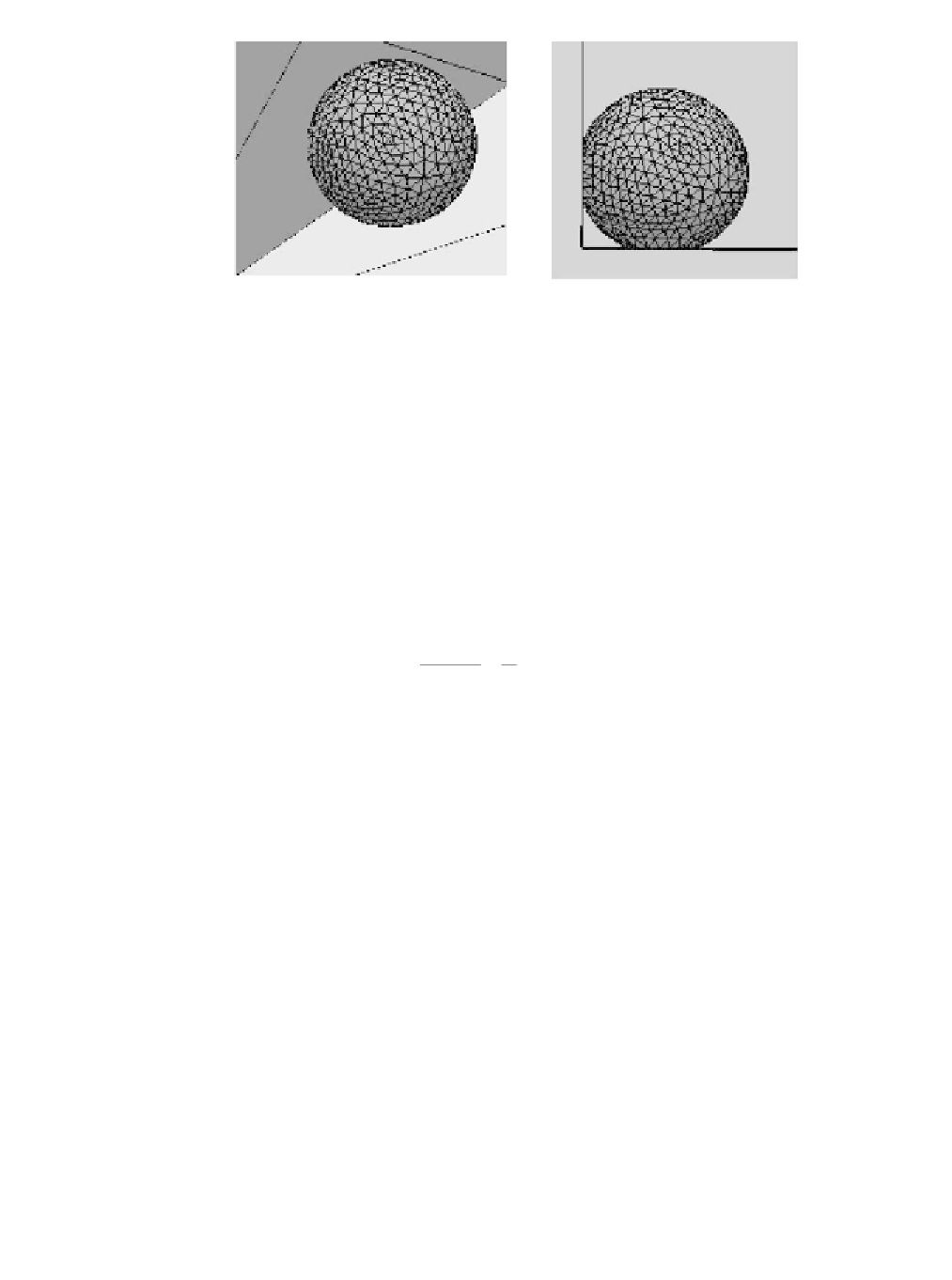Biomedical Engineering Reference
In-Depth Information
Figure 3.57
Droplet in a strongly hydrophobic corner: the droplet does not wet the tip of the cor-
ner, in accordance to the Concus-Finn relation.
When a glass cover is sealed on top, the upper corners form 45° angles and the
extended Concus-Finn condition indicates the following limit
θ θ π
α
+
1
2
<
-
=
67.5
°
2
2
The glass cover may be quite hydrophilic, say,
q
1
~ 60°, and if the channel is
also hydrophilic, say,
q
2
~ 70°, then (
q
1
+
q
2
)/2 ~ 65° and the liquid spreads in the
upper corners, leading to unwanted leakage. The same extension applies to the non-
wetting case. The extended Brakke-Concus-Finn de-wetting condition for a corner
(3.80) is
θ θ π
α
+
1
2
>
+
(3.82)
2
2
In a general way, the surface tension does not appear in the Brakke-Concus-
Finn relations. Thus, these relations also apply for two-phase liquids. If we consider
water and oil, the contact angles with hydrophilic and hydrophobic surfaces, re-
spectively, are of the order of
q
1
~ 60°, respectively
q
2
~ 130°. Concus-Finn relations
show that a droplet of oil surrounded by water is likely to form in hydrophilic chan-
nels, because the water spreads on the solid wall; conversely, oil is the continuous
phase in a hydrophobic channel, while water is dispersed into droplets.
Figure 3.58
Cross section of a trapezoidal microchannel.



